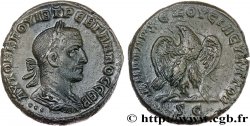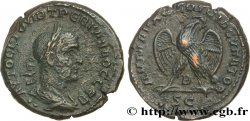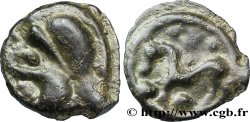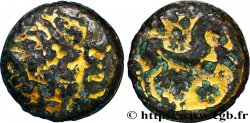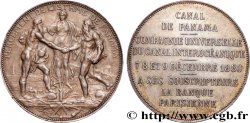Not available.
Item sold on our e-shop (2014)
Price : 45.00 €
Item sold on our e-shop (2014)
Price : 45.00 €
Type : Tétradrachme syro-phénicien
Date: 251
Mint name / Town : Antioche, Syrie, Séleucie et Piérie
Metal : billon
Diameter : 24,5 mm
Orientation dies : 6 h.
Weight : 10,68 g.
Coments on the condition:
Patine sombre
Catalogue references :
Predigree :
Cet exemplaire, le 0668_039 de la base TSP, provient d’un professionnel syrien au début des années 1990
Obverse
Obverse description : Buste lauré, drapé et cuirassé de Trébonien Galle à droite, vu de trois quarts en arrière (A*2), Z sous le buste.
Obverse legend : AUTOK K G OUIB TREB GALLOS SEB
Obverse translation : (L’empereur césar Caius Vibius Trebonien Galle auguste).
Reverse
Reverse legend : S C À L’EXERGUE.
Reverse description : Aigle debout à droite sur une ligne de terre, les ailes déployées, tête et queue à gauche, tenant une couronne feuillée dans son bec, lettre d’officine Z entre les pattes.
Reverse legend : DHMARC EX OUSIAS / Z
Reverse translation : (Revêtu de la puissance tribunitienne / avec l’accord du Sénat d’Antioche).
Commentary
Sans que l’on comprenne pourquoi, l’officine Z, donc la septième, se caractérise par une production relativement importante. Peut-être faut-il en déduire qu’elle ne frappait que des tétradrachmes alors que les autres frappaient également des antoniniens ou des tétradrachmes pour Volusien ?
Les frappes de Trébonien Galle et de Volusien signent la fin de la série des tétradrachmes syro-phéniciens, si l’on ne tient pas compte du sursaut d’Uranius Antoninus. Cette courte frappe, 251/253, va concentrer tous les symptômes d’une fin, de l’effondrement de l’aloi à celui du style.
Notons tout d’abord les changements de fond : mis à part la complète disparition des bustes radiés qui sont réservés à Volusien, la palme disparaît et la position de l’aigle change.
Que pouvait représenter cette palme ?
Une autorité impliquée dans le financement du monnayage ? Dans ce cas, elle aurait passé les siècles et serait certainement d’essence religieuse puisque sa première apparition est dans la main de la Tyché de la ville. Le culte rendu à cette divinité était-il si important que les autorités auraient pu en mettre le clergé à contribution où requérir son aval ? Si tel est le cas, pourquoi Trébonien Galle aurait-il dérogé à l’habitude ? Pourquoi aurait-elle disparu sous les Sévères ?
On peut aussi penser à un raccourci symbolique de la Tyché mais pourquoi Trébonien aurait-il éliminé cette référence ? La question reste ouverte.
D’autant plus que le changement de position de l’aigle, où tête et queue sont maintenant systématiquement en position inverse du corps, rappelle immanquablement les rarissimes émissions finales de Trajan Dèce et de sa famille avec cette position et le point entre les pattes, remplacé chez Trébonien Galle par la lettre d’atelier. Il faut croire que les changements de type monétaire précèdent, dans l’Antioche du IIIe siècle, les chutes de régime : cela se vérifie de Philippe à Galle.
La première série de frappe est de 251 AD avec un revers sans marque de consulat. Tous les bustes sont laurés, drapés et cuirassés sauf un buste à gauche de la septième officine, le seul buste exceptionnel retrouvé à ce jour. La qualité des frappes et de l’aloi sont comparables aux standards de Trajan Dèce.
On note que les sigma sont gravés en C.
Dans la base TSP maintenue par Michel Prieur, trente-neuf exemplaires sont maintenant répertoriés pour ce type dont en musées Paris (2), British Musem, Copenhague et Doura/Yale (5), ANS.
Without anyone understanding why, pharmacy Z, therefore the seventh, is characterized by a relatively high production. Perhaps we should deduce that it only struck tetradrachms while the others also struck Antoninianus or tetradrachms for Volusianus? The strikes of Trebonianus Gallus and Volusianus mark the end of the series of Syro-Phoenician tetradrachms, if we do not take into account the surge of Uranius Antoninus. This short strike, 251/253, will concentrate all the symptoms of an end, from the collapse of the alloy to that of the style..
Let us first note the fundamental changes: apart from the complete disappearance of the radiate busts which are reserved for Volusien, the palm disappears and the position of the eagle changes.
What could this palm represent? An authority involved in financing the coinage? In this case, it would have survived the centuries and would certainly be of religious essence since its first appearance is in the hand of the city's Tyche.. Was the cult of this deity so important that the authorities could have called upon the clergy or sought their approval? If so, why would Trebonianus Gallus have deviated from the custom? Why would it have disappeared under the Severi? One could also think of a symbolic shortcut to Tyche, but why would Trebonianus have eliminated this reference? The question remains open..
All the more so since the change in position of the eagle, where the head and tail are now systematically in the opposite position to the body, inevitably recalls the extremely rare final emissions of Trajan Decius and his family with this position and the point between the legs, replaced in Trebonianus Galle by the workshop letter. It must be believed that changes in monetary type precede, in Antioch of the 3rd century, the falls of regime: this is verified from Philip to Galle.
The first strike series is from 251 AD with a reverse without a consulate mark. All the busts are laureate, draped and cuirassed except for one bust on the left of the seventh office, the only exceptional bust found to date.. The quality of the strikes and the alloy are comparable to the standards of Trajan Decius..
Note that the sigmas are engraved in C.
In the TSP database maintained by Michel Prieur, thirty-nine examples are now listed for this type, including in museums in Paris (2), British Museum, Copenhagen and Doura/Yale (5), ANS
Les frappes de Trébonien Galle et de Volusien signent la fin de la série des tétradrachmes syro-phéniciens, si l’on ne tient pas compte du sursaut d’Uranius Antoninus. Cette courte frappe, 251/253, va concentrer tous les symptômes d’une fin, de l’effondrement de l’aloi à celui du style.
Notons tout d’abord les changements de fond : mis à part la complète disparition des bustes radiés qui sont réservés à Volusien, la palme disparaît et la position de l’aigle change.
Que pouvait représenter cette palme ?
Une autorité impliquée dans le financement du monnayage ? Dans ce cas, elle aurait passé les siècles et serait certainement d’essence religieuse puisque sa première apparition est dans la main de la Tyché de la ville. Le culte rendu à cette divinité était-il si important que les autorités auraient pu en mettre le clergé à contribution où requérir son aval ? Si tel est le cas, pourquoi Trébonien Galle aurait-il dérogé à l’habitude ? Pourquoi aurait-elle disparu sous les Sévères ?
On peut aussi penser à un raccourci symbolique de la Tyché mais pourquoi Trébonien aurait-il éliminé cette référence ? La question reste ouverte.
D’autant plus que le changement de position de l’aigle, où tête et queue sont maintenant systématiquement en position inverse du corps, rappelle immanquablement les rarissimes émissions finales de Trajan Dèce et de sa famille avec cette position et le point entre les pattes, remplacé chez Trébonien Galle par la lettre d’atelier. Il faut croire que les changements de type monétaire précèdent, dans l’Antioche du IIIe siècle, les chutes de régime : cela se vérifie de Philippe à Galle.
La première série de frappe est de 251 AD avec un revers sans marque de consulat. Tous les bustes sont laurés, drapés et cuirassés sauf un buste à gauche de la septième officine, le seul buste exceptionnel retrouvé à ce jour. La qualité des frappes et de l’aloi sont comparables aux standards de Trajan Dèce.
On note que les sigma sont gravés en C.
Dans la base TSP maintenue par Michel Prieur, trente-neuf exemplaires sont maintenant répertoriés pour ce type dont en musées Paris (2), British Musem, Copenhague et Doura/Yale (5), ANS.
Without anyone understanding why, pharmacy Z, therefore the seventh, is characterized by a relatively high production. Perhaps we should deduce that it only struck tetradrachms while the others also struck Antoninianus or tetradrachms for Volusianus? The strikes of Trebonianus Gallus and Volusianus mark the end of the series of Syro-Phoenician tetradrachms, if we do not take into account the surge of Uranius Antoninus. This short strike, 251/253, will concentrate all the symptoms of an end, from the collapse of the alloy to that of the style..
Let us first note the fundamental changes: apart from the complete disappearance of the radiate busts which are reserved for Volusien, the palm disappears and the position of the eagle changes.
What could this palm represent? An authority involved in financing the coinage? In this case, it would have survived the centuries and would certainly be of religious essence since its first appearance is in the hand of the city's Tyche.. Was the cult of this deity so important that the authorities could have called upon the clergy or sought their approval? If so, why would Trebonianus Gallus have deviated from the custom? Why would it have disappeared under the Severi? One could also think of a symbolic shortcut to Tyche, but why would Trebonianus have eliminated this reference? The question remains open..
All the more so since the change in position of the eagle, where the head and tail are now systematically in the opposite position to the body, inevitably recalls the extremely rare final emissions of Trajan Decius and his family with this position and the point between the legs, replaced in Trebonianus Galle by the workshop letter. It must be believed that changes in monetary type precede, in Antioch of the 3rd century, the falls of regime: this is verified from Philip to Galle.
The first strike series is from 251 AD with a reverse without a consulate mark. All the busts are laureate, draped and cuirassed except for one bust on the left of the seventh office, the only exceptional bust found to date.. The quality of the strikes and the alloy are comparable to the standards of Trajan Decius..
Note that the sigmas are engraved in C.
In the TSP database maintained by Michel Prieur, thirty-nine examples are now listed for this type, including in museums in Paris (2), British Museum, Copenhagen and Doura/Yale (5), ANS







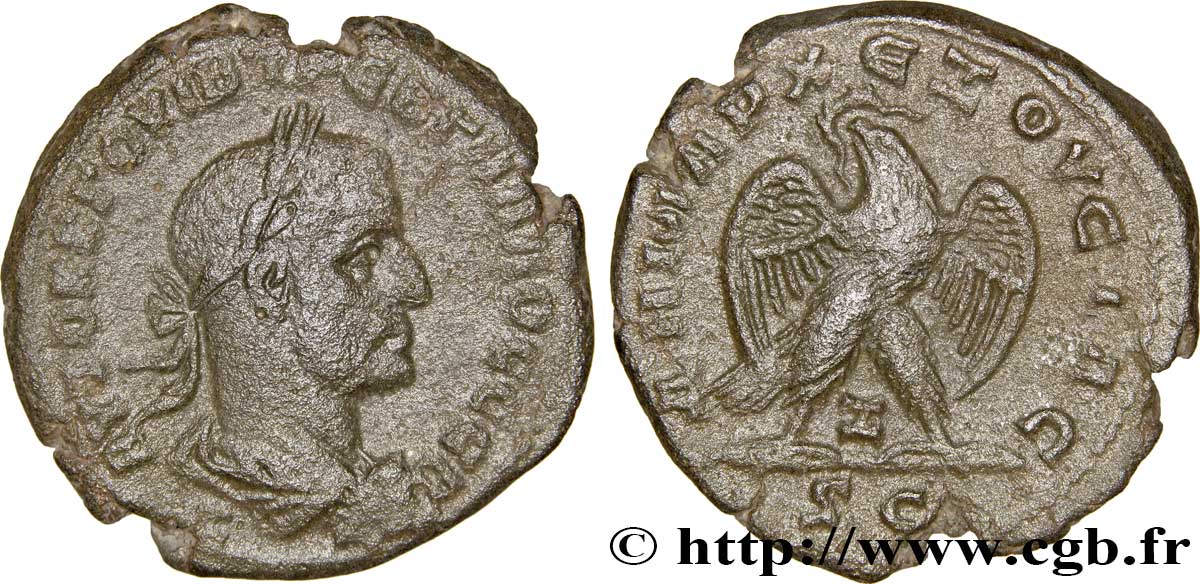
 Report a mistake
Report a mistake Print the page
Print the page Share my selection
Share my selection Ask a question
Ask a question Consign / sell
Consign / sell
 Full data
Full data